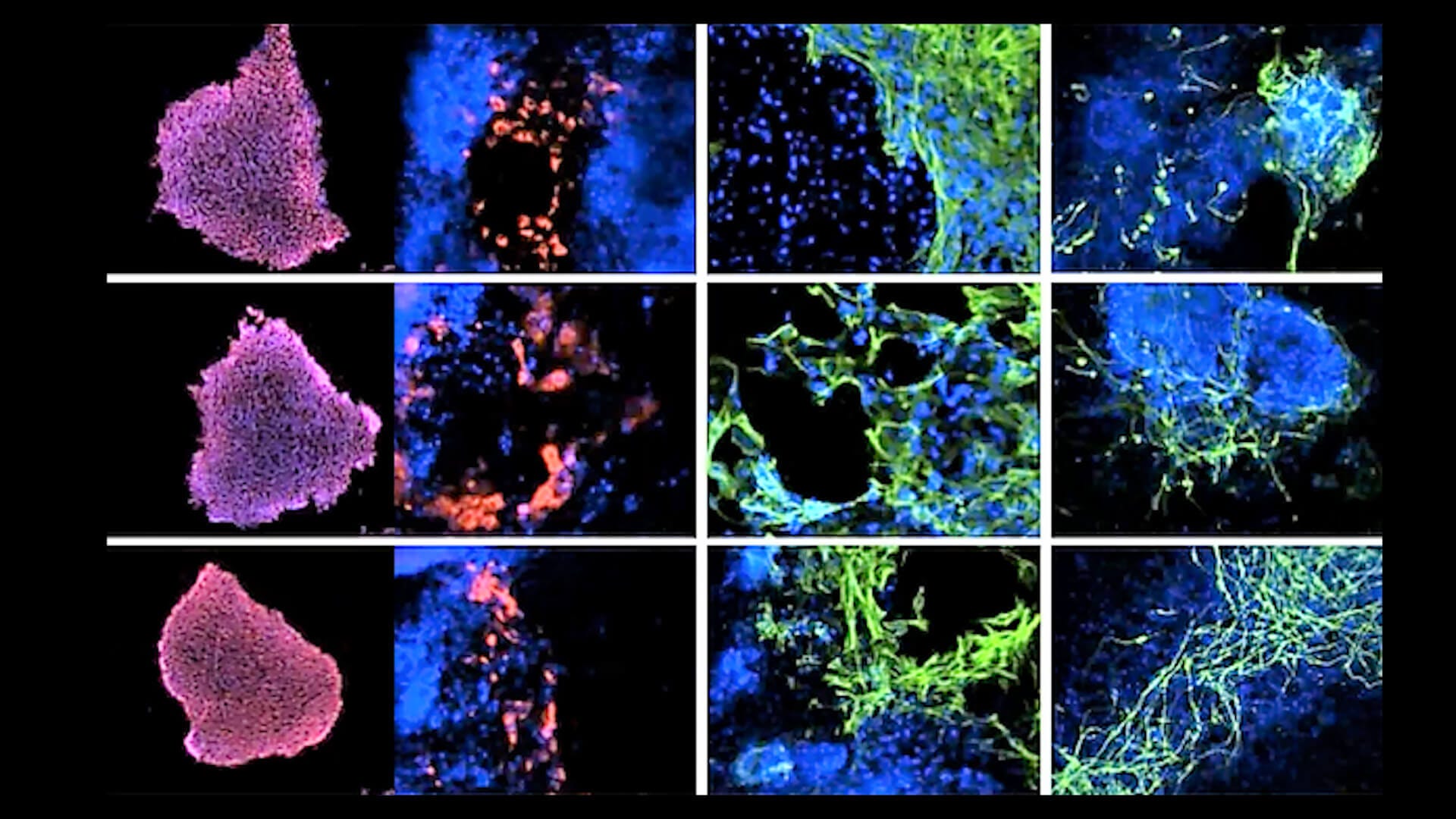Neurological Disease Modeling
Due to the difficulty in obtaining human brain tissue for experimental studies, animal models have traditionally been popular tools for neurological disease modeling and therapeutic evaluation. In recent years, however, researchers have begun using induced pluripotent stem cells (iPSCs) to generate more representative models for studying human neurological disease. These iPSC-based models, including iPSC-derived neurons, glia, neural organoids, and co-cultures, hold tremendous potential for drug discovery applications and studying human neurological disease. Researchers can now generate patient-specific differentiated cell types, bridging the translational gap between studies using animal models and clinical research.
We’ve created these resources to help you with your research in neurological disease modeling and drug discovery, and to give you a taste of what others are doing in the field.
Modeling Genetic Epilepsies with Induced Pluripotent Stem Cells
In this webinar, Dr. Andrew Tidball discusses current and potential uses of iPS cells for modeling epilepsies, how to develop different iPS cell-based model systems, as well as the key advantages and drawbacks of using these model systems.
View Now >-
 SnapShot: Glioblastoma MultiformeOverview of the key concepts and mechanisms in glioblastoma multiforme biology
SnapShot: Glioblastoma MultiformeOverview of the key concepts and mechanisms in glioblastoma multiforme biology -
 Highly Characterized Human iPSCs and NPCs for Downstream Differentiation ApplicationsReproducible research with human induced pluripotent stem cells (iPSCs) depends on access to thoroughly characterized and quality-controlled cell lines. In this webinar, Drs. Andrew Gaffney and Erin Knock will describe the generation of a standardized induced pluripotent stem cell (iPSC) line. Developed with the upcoming ISSCR Standards Initiative characterization guidelines in mind, this highly characterized line is karyotypically stable, demonstrates trilineage differentiation potential, and expresses undifferentiated cell markers. Further, ∫£Ω«∆∆Ω‚∞Ê has developed a highly pure, ready-to-use neural progenitor cell product expressing PAX6 and SOX1 over multiple passages. Dr. Knock will show how these multipotent cells are suitable for customized downstream differentiation to various CNS cell types, such as forebrain neurons, midbrain neurons, and astrocytes. These progenitor cells are the ideal controls for standardizing downstream differentiation protocols, modeling diseases, and developing assays.
Highly Characterized Human iPSCs and NPCs for Downstream Differentiation ApplicationsReproducible research with human induced pluripotent stem cells (iPSCs) depends on access to thoroughly characterized and quality-controlled cell lines. In this webinar, Drs. Andrew Gaffney and Erin Knock will describe the generation of a standardized induced pluripotent stem cell (iPSC) line. Developed with the upcoming ISSCR Standards Initiative characterization guidelines in mind, this highly characterized line is karyotypically stable, demonstrates trilineage differentiation potential, and expresses undifferentiated cell markers. Further, ∫£Ω«∆∆Ω‚∞Ê has developed a highly pure, ready-to-use neural progenitor cell product expressing PAX6 and SOX1 over multiple passages. Dr. Knock will show how these multipotent cells are suitable for customized downstream differentiation to various CNS cell types, such as forebrain neurons, midbrain neurons, and astrocytes. These progenitor cells are the ideal controls for standardizing downstream differentiation protocols, modeling diseases, and developing assays. -
 Mini-Symposium: The Evolution and Application of Brain Organoids to Study Human DiseaseDuring this virtual symposium, Drs. Vivi Heine (Amsterdam UMC), Veronica Krenn (IMBA), and Melvin Evers (uniQure) discuss how brain organoids are providing powerful model systems for understanding health and disease in a human-specific context.
Mini-Symposium: The Evolution and Application of Brain Organoids to Study Human DiseaseDuring this virtual symposium, Drs. Vivi Heine (Amsterdam UMC), Veronica Krenn (IMBA), and Melvin Evers (uniQure) discuss how brain organoids are providing powerful model systems for understanding health and disease in a human-specific context. -
 ISSCR Innovation Showcase: Advanced Brain Organoid Co-Culture SystemsIn this Innovation Showcase talk from ISSCR 2020 Virtual, Dr. Erin Knock gives a detailed overview of advanced brain organoid co-culture systems.
ISSCR Innovation Showcase: Advanced Brain Organoid Co-Culture SystemsIn this Innovation Showcase talk from ISSCR 2020 Virtual, Dr. Erin Knock gives a detailed overview of advanced brain organoid co-culture systems.









